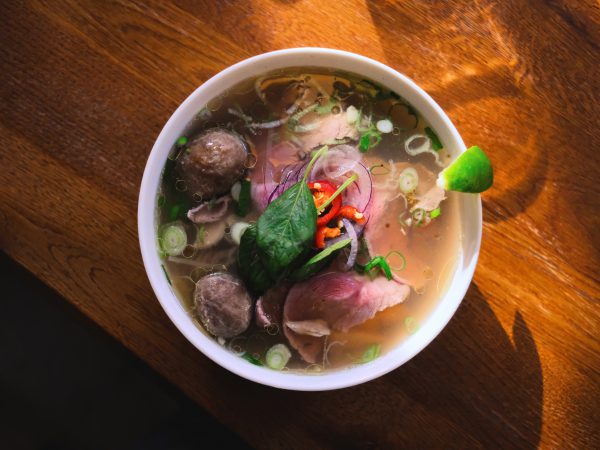Last Updated on June 12, 2022
Balsamic vinegar is such a distinctive vinegar that it belongs in its own category. Many people consider it the “crown jewel” of the vinegar family. If you too find that it’s your favorite salad dressing or condiment for your steak, stick around to hear its whole story, which dates back to ancient Rome. Sure, it’s usually an affordable product, but it’s also possible for one little 100 ml bottle of properly made, top-quality balsamic vinegar to have a price tag of up to $400.
So what’s the big deal about this condiment? We are here to explore its history and its production process, and, of course, give you tips on how to use it properly to help you take your dishes to the next level.
A Brief History of Vinegar
The first documented usage of vinegar is from around 7 thousand years ago. Babylonians are known to have used it as a preservative and a condiment.
The discovery of vinegar was probably an accident. If you’ve ever experimented with home brewing, you most likely have coincidentally made a vinegar mother. It’s the gelatinous layer that grows on top of the syrup-like result of a failed wine-making attempt after a couple of days.
The same thing likely happened in ancient Babylon in 5000 BC, and these pioneer vinegar-makers were soon followed by the ancient Egyptians, Chinese, and Greeks. Every civilization has figured out how to make vinegar because it’s simply inevitable.
At first, the failed wine or beer-making attempt may have disappointed the ancient brewers. But another discovery that followed was that vinegar could be used to preserve food, which was crucial for survival, because, at the time, food was not always abundant or easily obtained. Pickled food is not only tasty but it can be stored for a very long time. Ancient civilizations learned this and started pickling food, a practice that got them through times of scarcity.
So, in a way, vinegar helped ancient societies persevere through tough times. Naturally, pickling ended up being too good of a skill not to be passed down to future generations, which is how, today, we’ve come to enjoy many different types of pickles – from pickled onions to pickled eggs.
How Vinegar Is Made
When you’re making any kind of a sugary beverage, like fruit juice, for example, if you let it sit around for a while, the yeast and bacteria that live in the environment will somehow find their way in and start feeding on the sugars in the beverage, producing alcohol and carbon dioxide as by-products. In a nutshell, this is how alcoholic beverages are made and the whole process is called fermentation. The longer you let the beverage ferment, the stronger the alcohol content will be.
However, if you let the beverage sit for some more time, a different class of microorganisms from the environment called acetobacters will join the party, and they’ll simply start consuming the alcohol and producing acetic acid (mycoderma aceti) and cellulose as a by-product. And if there are enough of them, you will see the vinegar mother forming as the top layer. It’s basically a huge party of happily fed bacteria solidified in your juice that can sustain themselves by feeding on its cellulose.
At a certain point, you’ll have to remove the mother of vinegar and seal the container to kill off the remaining microorganisms because if they remain for too long, they’ll start to break down the vinegar and make it weaker and destroy the flavor. When the vinegar is sealed off, it’s put in a container (like a bottle or a barrel) and it’s left to age for years on end. As it ages, its flavor starts to mature and the vinegar develops character and depth.
What Is Balsamic Vinegar?
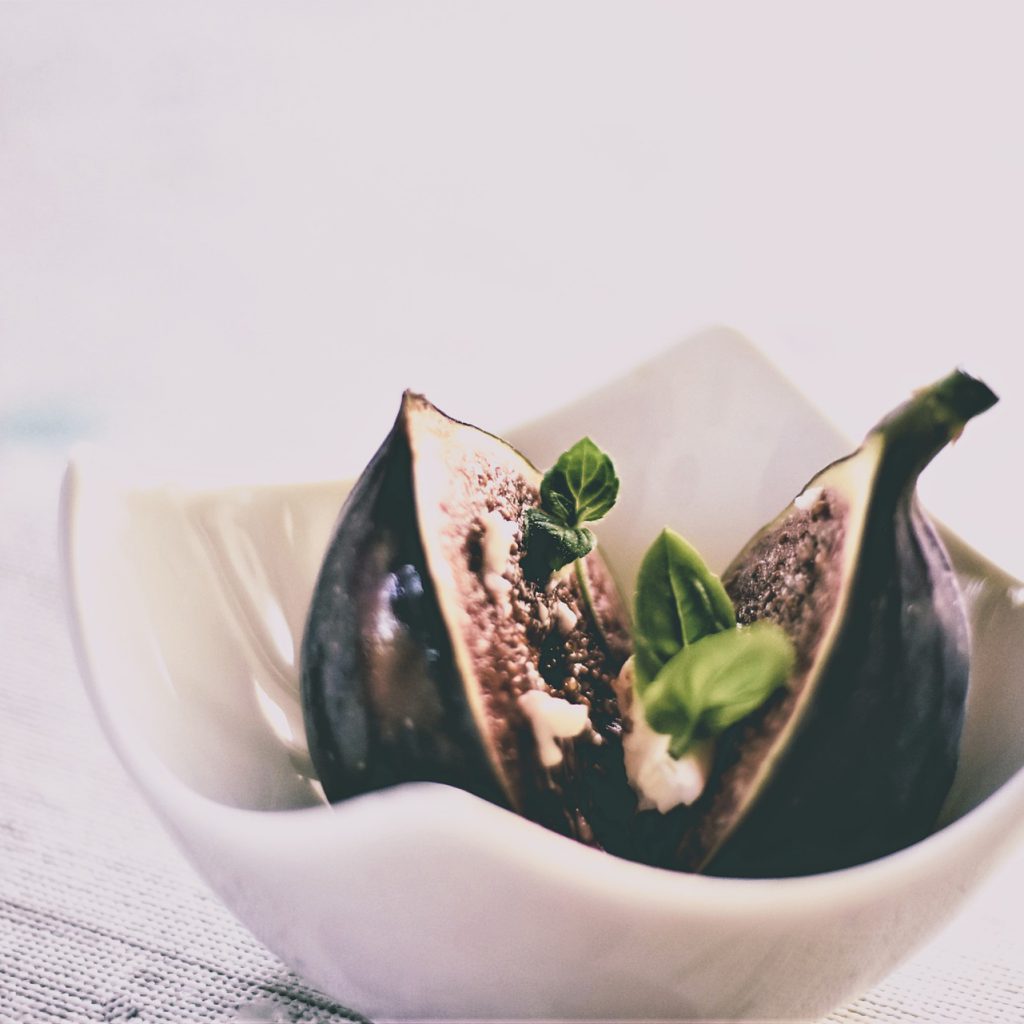
A proper balsamic vinegar is a sour syrup. It’s called balsamico because its texture resembles a balsam, which is a resinous substance produced by various plants used in the production of medicinal balms, perfumes, and cosmetics. Balsamic vinegar is different from regular vinegar in terms of its viscosity, smell, and taste. It has a complex aroma that incorporates sourness and sweetness with the flavors of the wooden barrel it’s matured in.
While you can make vinegar from any kind of sweet alcoholic beverage, like apple cider, sake, or beer, balsamic vinegar — the most celebrated vinegar in the world — is made from grape must, which is pressed or crushed grape juice that also contains the seeds, stems, and seeds of the grapes. The grape must is simmered until thickened and then aged in wooden barrels.
It may sound simple, but the process itself can be tedious — for the flavor to reach its full potential, manufacturers let it sit for a while because the longer it ages, the thicker and more concentrated with flavor it gets.
Because the barrels aren’t leakproof, some of the vinegar evaporates over time, so it’s transferred into successively smaller barrels over the years, made of different types of wood, like juniper, oak, cherry, or ash, which imparts a unique flavor on the balsamic vinegar while toning down its acidity.
Balsamic vinegar has a long history, especially in Reggio Emilia and Modena, two Northern Italian cities in the middle of Emilia Romagna, a region famous for its balsamic vinegar. The area has a certain semi-continental climate thanks to its proximity to the Adriatic Sea and the slow-flowing Po river. It has the perfect conditions for growing grapes with the perfect balance of sweetness and acidity that, when combined with the centuries-old craftsmanship of the local producers, make for a perfect traditional balsamic vinegar recipe.
Modena’s Balsamic Vinegar
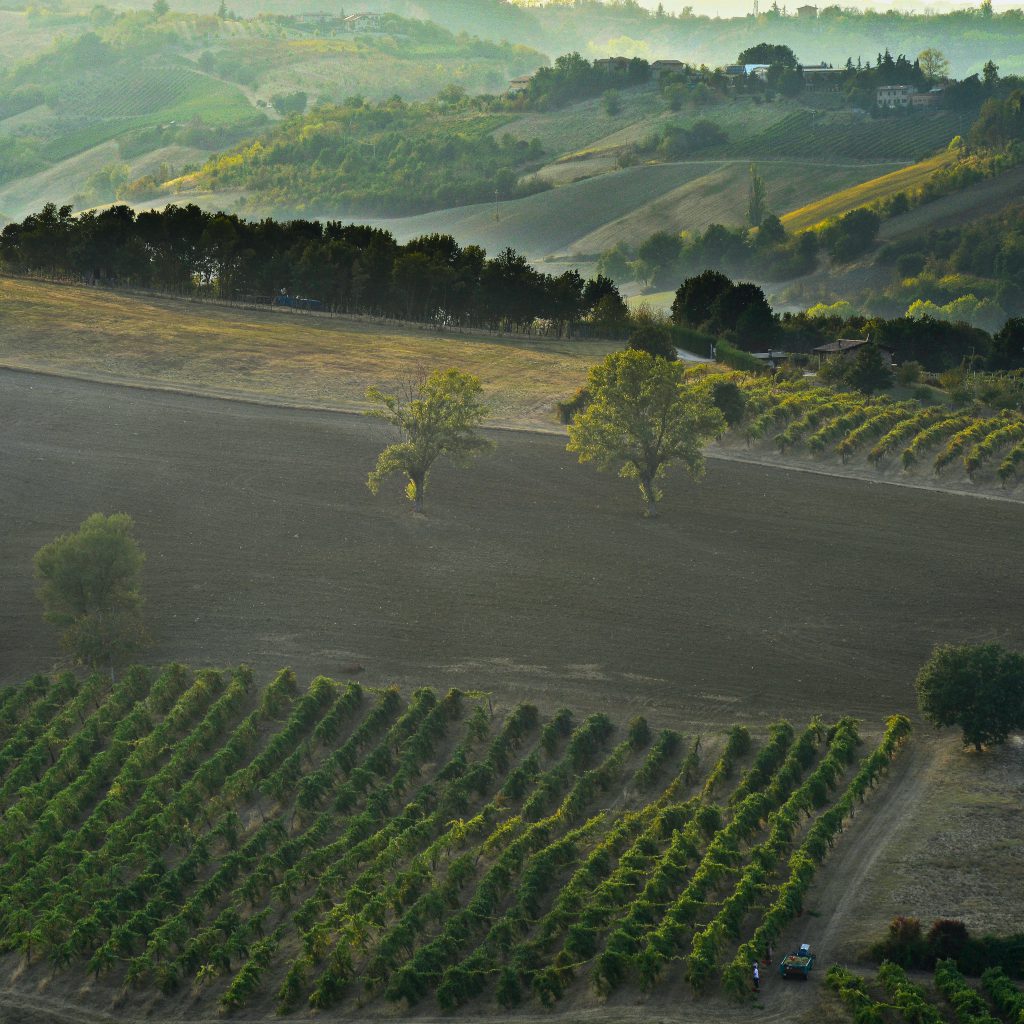
According to the earliest records available, the history of balsamic vinegar goes back to the 11th century, to 1046 to be more precise, when the Emperor Enrico III of Franconia, who was soon to be Holy Roman Emperor, was reportedly gifted a bottle of laudatum acetum, a famous type of vinegar at the time, by Marquis Bonifacio when he was passing through the city of Modena. It’s believed that this laudatum acetum is the same as the one we now famously call balsamic vinegar.
Later, some type of black vinegar appears again in many different texts originating from the region. However, the first official documents mentioning balsamic vinegar appear during the 16th century, and it doesn’t take much time until it was acknowledged as a valuable product that was only available to royalty and the artisans who made it. While it likely became a popular artisan food staple in Emilia Romagna in this period, it didn’t make its way to other parts of the world until the 20th century.
The root of the word balsamic is balsam, and its etymology goes back to the biblical Balm of Gilead, a rare mixture that was used medicinally to cure many malaises and diseases. In time, the term came to refer to some sort of panacea, a universal medicine for many diseases.
Aside from being a delicious condiment, balsamic vinegar had a lot of other uses — it was used to cure a variety of maladies, from the common cold to the pain of childbirth. As its reputation grew, word of its numerous benefits spread fast and reached the nobility, and so balsamic vinegar became a luxurious gift to give to nobles to impress them.
Today we know that balsamic vinegar helps lower cholesterol, aids healthy digestion thanks to the probiotics it contains, improves blood circulation, and is thought to improve the quality of our skin.
Traditionally, Italians call balsamic vinegar aceto balsamico, where aceto means vinegar, while balsamico means “balsam-like”, as in restorative. Today, the production of balsamic vinegar in Modena has remained the same as centuries ago. Manufacturers in the region have kept the tradition of aging the vinegar in successively smaller wooden barrels as the liquid matures and develops that complex smokey flavor, which makes for the most authentic aceto balsamico.
Balsamic vinegar is an integral part of Italian cuisine. Italians love to include it in their dishes in a variety of ways (other than in salads) — veal scaloppine, seafood, risotto, and grilled meats all become even tastier with a drizzle of aceto balsamico.
If you’re interested in Italian cuisine, check out this gourmet cooking class to learn how to use traditional Italian ingredients, including balsamic, to take your dishes to the next level. And if you ever visit Modena, you can join a balsamic vinegar tasting tour to experience the aromatic nuances of aceto balsamico firsthand.
European Commission’s Geographical Indications
The balsamic vinegar of Modena received the Protected Designation of Origin (PDO) and the Protected Geographical Indication (PGI) statuses by the European Commission in 2000 and 2009, respectively. These are geographical indications that the product is in compliance with EU’s specific guidelines for foodstuffs whose purpose is to protect and promote specific products whose properties are closely linked to their geographical origins.
This standardization exists to protect consumers from buying imitations. Since there can be many factors affecting the taste of the product, like the characteristics of the soil, the type of grapes, and the methods utilized, this certified status is something that can assure consumers that what they’re getting is genuine.
A certified aceto balsamico will always have either the yellow-and-blue PGI logo or the red-and-yellow PDO logo on the bottle.
Is the Balsamic Vinegar of Modena the Most Authentic Kind of Vinegar?

You might be thinking — how come you can find affordable balsamic vinegar in the store if the production process is potentially decades-long? The answer is that when you buy balsamic vinegar from the store, you aren’t getting the genuine aceto balsamico from Modena or Reggio Emilia, protected by the P.D.O. and PGI regulations.
As we said, bottles of genuine balsamic vinegar made in this region always have the stamp of D.O.P. (Denominazione di Origine Protetta), which is just P.D.O. in Italian, and IGP (Indicazione Geografica Protetta in Italian).
When it comes to P.D.O.-indicated bottles of balsamic vinegar, there are only 2 authentic ones: Balsamic Vinegar of Modena P.D.O. and Balsamic Vinegar of Reggio Emilia P.D.O. This indicates the bottles of vinegar are made from the unique types of grape that grow in this region thanks to its unique climate conditions.
The bottles of Balsamic Vinegar of Modena P.D.O. are rated according to their approximate ages. The older ones are rated extra vecchio with a gold cap, and relatively younger ones are rated affinito. The bottles of Balsamic Vinegar of Reggio Emilia P.D.O. are rated a little bit more elaborately.
The bottles of balsamic vinegar from Reggio Emilia approximately correspond to the following labeling:
- 12-year old bottles have red caps and are rated affinito meaning fine;
- 15 to 20-year-old bottles have silver caps are rated vecchio meaning old;
- 20 to 25-year-old bottles have golden caps and are rated extra vecchio meaning extra old.
The other type of balsamic vinegar with a geographical indication is Balsamic vinegar of Modena P.G.I. (protected geographical indication). This one still comes from the protected region and is made from the grape must from Modena, but it’s mixed with red wine vinegar and aged for around 2 months. P.G.I. indicated bottles of balsamic can also include up to 2% caramel. These bottles are much more affordable than the aceto balsamico tradizionale with P.D.O. stamps.
How to Choose Balsamic Vinegar?
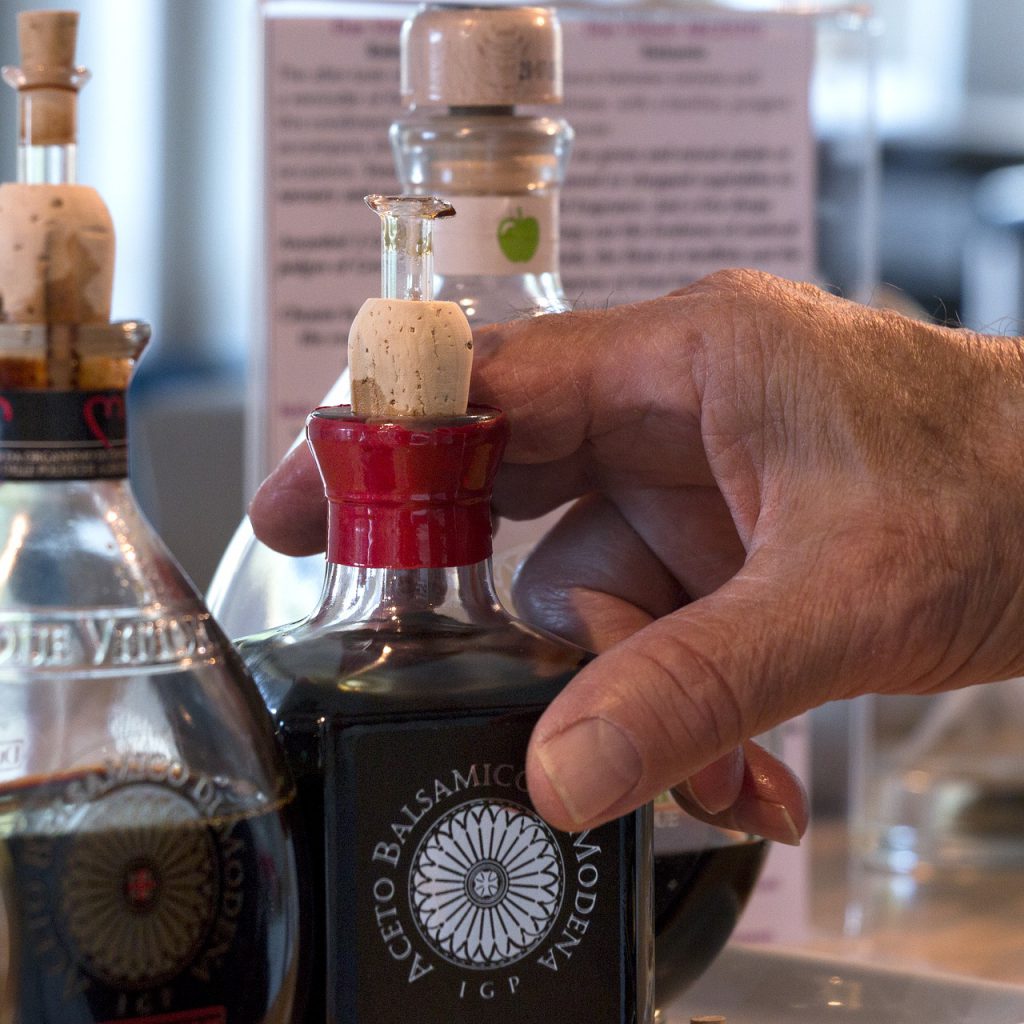
You can use balsamic vinegar to add an Italian twist to your cooking. You might not be getting one from Northern Italy with a certified stamp on it, but there are still good balsamic vinegar brands out there. They are just not in compliance with the EU’s geographical indications simply because it requires a thorough investigation of the origin of the raw material and this increases the costs of production.
This less strictly produced type of balsamic vinegar is called condiment or condimento.
When you go to the store to get yourself some balsamic vinegar, there are some things you can keep in mind to choose a good one.
- First and foremost, beware of additives. Authentic balsamic vinegar consists only of grape must. If you’re getting condimento, the bottle can include some amount of wine vinegar but make sure it’s not too dominant.
- You can also check if you’re buying the real deal by tilting the bottle gently to determine the vinegar’s viscosity, because a good balsamic vinegar is always thicker, like a syrup.
- If there’s an indication of the age of the vinegar on the bottle, you are holding an imitation, because the traditional balsamic vinegar producers never fully empty the barrels they use. Keeping track of the exact age of the vinegar that goes into a bottle is misleading. Because of this, the PDO indication doesn’t support any claims of the aging of balsamic vinegar.
Hopefully, these tips will help you choose an excellent balsamic vinegar that will add so much Italian flair to your dishes.
How to Use Balsamic Vinegar?
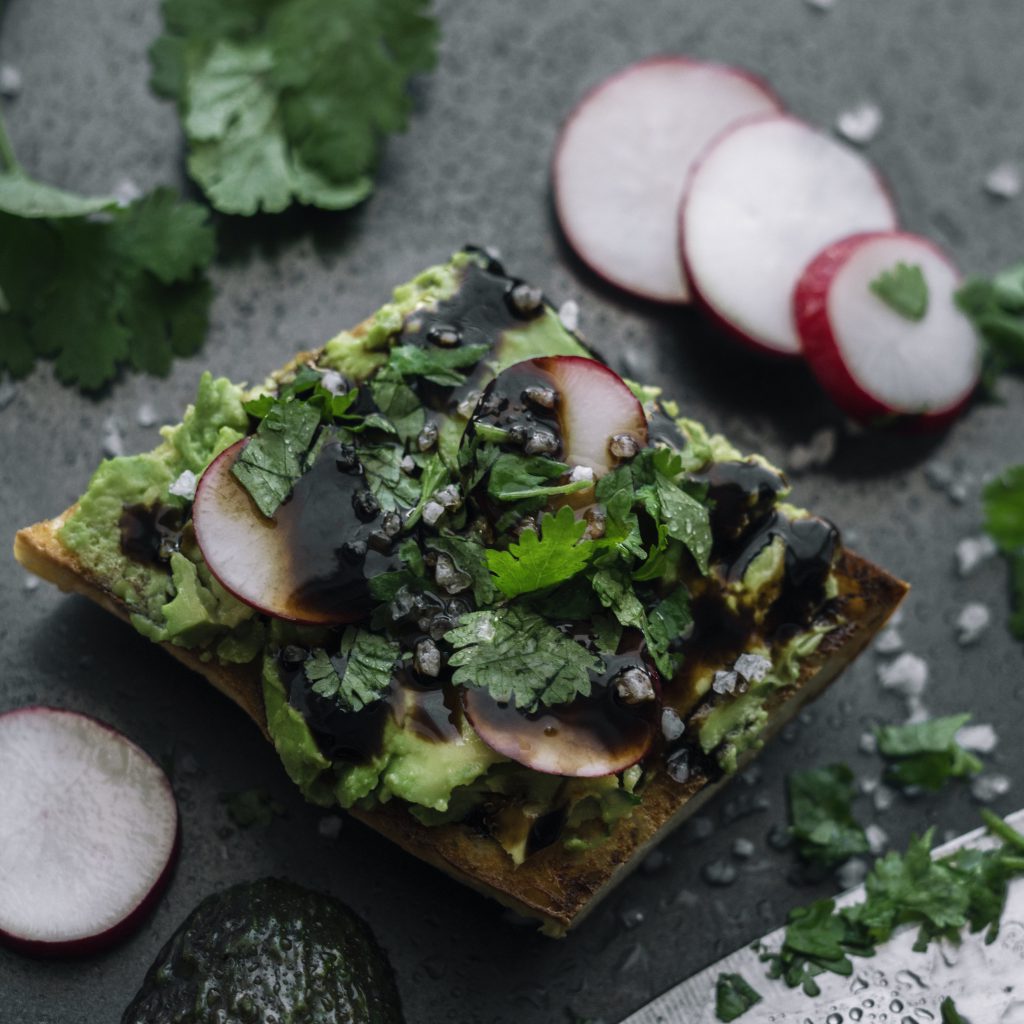
Because the aging process brings out so many different flavors and sweetness from the grape must, a good balsamic vinegar is very different from other types of vinegar. For that reason, you can think of balsamic vinegar as more of an acidic syrup.
The first rookie mistake many home cooks make is to use balsamic vinegar as a salad dressing. Aceto balsamico is not as acidic as other kinds of vinegar so using it as a salad dressing would be wasting the precious ingredient.
The other big no-no is cooking the balsamic vinegar because heat breaks down all the good components of the sauce.
Instead, you can use it to marinate your steaks and chicken. Or, to make the most out of it, you can drizzle it over your plate of cooked or smoked meat, fish, or cheese. Think about the way the balsamic vinegar complements the balance between acidic and sweet tones, which is why it also goes great with fresh fruits such as strawberries, or even desserts.
How to Store Balsamic Vinegar?
Once you get yourself a good balsamic vinegar, storing it is not much of a hassle, because it can be stored indefinitely. Even when you open the bottle, the oxygen doesn’t interfere with the chemical structure of the balsamic, because the selling-off process itself eliminates the microorganisms in it.
But still, keeping it in a cool dark place will help the vinegar preserve its flavor for longer since heat is known to break up some of the components in the balsamic, causing it to lose its flavor.
And lastly, you may see some sediment at the bottom of the bottle. This is not a cause for concern — it’s something that naturally occurs in every bottle as it waits on the shelf to be picked up.
That’s a Wrap!
Balsamic vinegar is the superstar of vinegars thanks to its robust and sophisticated flavor and dense texture. When it’s made of proper grapes, it turns into a beautiful condiment that compliments meats, fruits, cheeses, and much more.
People in Italy have been using this black gold since the beginning of the millennium as a medicine, condiment, and lavish gift, but its fame throughout the rest of the world is relatively new.
Nevertheless, now you know the subtleties of making balsamic vinegar and you’ve hopefully picked up to know which bottles are the real deal. If you’ve never used it in your kitchen, we hope this article encourages you to add it to your shelf.



